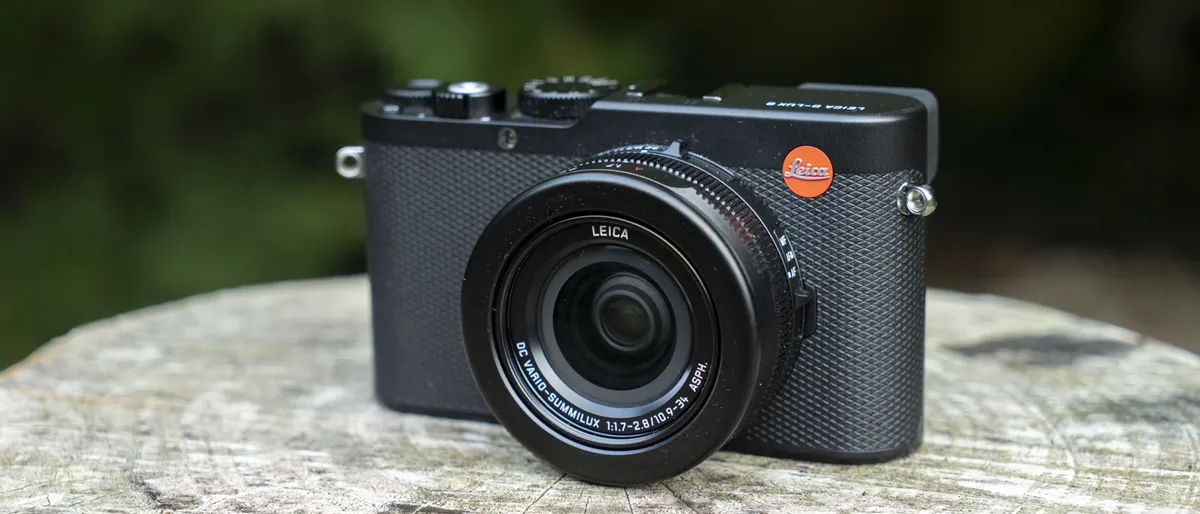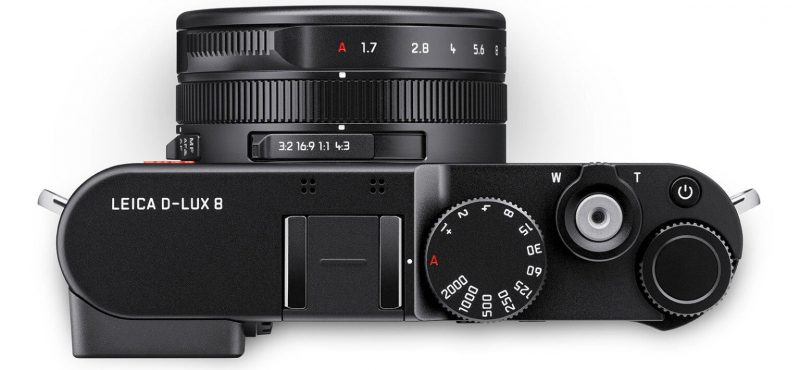The Leica D-Lux 8 is a stylish compact camera that captures the essence of Leica’s design and delivers solid image quality. While it looks great, its modest improvements over the D-Lux 7 might leave some users wondering if it’s worth the upgrade. In this review, we’ll dive deep into the specs, performance, and usability to help you decide if the D-Lux 8 is right for you.

What the Leica D-Lux 8 does right
Right off the bat, the Leica D-Lux 8 stands out because of its classic Leica design and simplicity. It has that iconic red dot, but there’s more to this camera than just the logo. One of its strengths is the large Four-Thirds sensor, which is much bigger than the typical 1-inch sensors you’ll find in other compact cameras. This sensor provides significantly better image quality than a smartphone, particularly in low light, and gives more depth to your photos.
The camera is equipped with a Leica DC Vario-Summilux 10.9–34mm f/1.7–2.8 lens, equivalent to a 24-75mm zoom on a full-frame camera. This versatile range makes it great for both wide-angle shots and tighter portraits. The fast f/1.7 aperture means you’ll get nice background blur, especially when shooting up close, which is something phone cameras struggle with.

You’ll also appreciate the tactile controls. There’s an aperture ring, a shutter-speed dial, and a variety of other physical buttons that make it feel more like an old-school rangefinder. This gives you full manual control without diving into the menus, perfect for users who want to adjust their settings on the fly.
Image quality and performance
When it comes to image quality, the D-Lux 8 doesn’t disappoint, but it doesn’t blow you away either. The 17MP images are sharp, with good dynamic range and accurate colors. Thanks to the Four-Thirds sensor, the camera performs well up to ISO 1600 with very little noise. However, once you go above ISO 3200, image quality starts to degrade noticeably, which is typical for a camera of this size. Still, the D-Lux 8 easily outperforms most smartphones, especially in challenging lighting conditions.


One standout feature is the ability to switch between different aspect ratios using a ring around the lens. You can shoot in 1:1, 4:3, 3:2, and 16:9 without affecting the focal length, giving you flexibility in how you compose your shots. The aspect ratio switch is a small but thoughtful addition that makes the camera feel more versatile.

Autofocus on the D-Lux 8 is fast and accurate for still subjects, but it struggles a bit with continuous autofocus when tracking moving objects. For street photography or casual portraits, it works well, but if you’re shooting fast action, it’s not the quickest. The camera offers burst shooting modes at different frame rates, but with some limitations: at 7 fps, autofocus locks after the first frame, and at 11 fps, the bit depth drops to 10-bit, affecting the image quality.
Handling and design: It’s a mixed bag
The camera is compact, measuring 130 x 69 x 62 mm, and weighs 397g with the battery, making it jacket-pocketable but still substantial in hand. It’s got a retro feel, with a hotshoe for external flashes, a manual aperture ring, and a shutter button with a cable release thread, which is great for photographers who prefer a more tactile shooting experience.

One downside is the fixed 3-inch screen. It’s a high-resolution 1.8-million-dot touchscreen, but you can’t tilt or flip it. If you’re used to shooting at awkward angles or filming video content, this can be frustrating. You’ll find yourself leaning on the 2.36-million-dot OLED electronic viewfinder (EVF), which, while sharp, has slightly lower resolution than the 2.76-million-dot EVF of the D-Lux 7. However, the new OLED panel offers better color accuracy and no color tearing, especially when you’re panning quickly, which is a major improvement over its predecessor.
The design keeps things simple, with minimal dials and buttons cluttering the body, but some may find the lack of a deeper handgrip uncomfortable for long periods of use. It’s clear Leica prioritizes aesthetics over ergonomics here.

Drawbacks of the Leica D-Lux 8
While the D-Lux 8 is a solid camera, it doesn’t justify its high price tag of $1,595 / £1,450 / AU$2,790 for everyone, especially when you consider that it’s nearly identical to the older D-Lux 7 and Panasonic Lumix LX100 II, which both cost significantly less. If you already own either of those cameras, upgrading to the D-Lux 8 feels like an expensive luxury rather than a necessity.
The fixed screen is another big con. For many photographers, especially street shooters, having a tilting screen is essential for shooting at waist level or getting creative angles. Without this, the D-Lux 8 feels limiting in certain scenarios. If you’re used to this feature, switching to the D-Lux 8 might feel like a step back.
Additionally, the camera’s continuous autofocus is slow, especially in burst mode, where it only manages 2 fps while tracking subjects. It’s not ideal for fast-moving subjects, and if you’re used to shooting sports or wildlife, this camera won’t keep up.
Video capabilities: Not its strong suit
If you’re looking to shoot high-quality video, the D-Lux 8 falls short. While it can record 4K video at 30fps, the footage lacks the smoothness and detail you’d expect from a camera in this price range. The autofocus is jittery, and with no mic input or tilting screen, vlogging or professional video work is out of the question.
For casual video clips, it gets the job done, but don’t expect much more than what you’d get from a modern smartphone. The camera also lacks stabilization for video, so handheld footage tends to be shaky unless you’re using a tripod.
Who should buy the Leica D-Lux 8?
The Leica D-Lux 8 is for you if:
- You crave Leica style without the M-series price
If you’ve always wanted to own a Leica but don’t have €8,000 for an M or Q series, the D-Lux 8 is a great entry point into the brand. - You want better image quality than your smartphone
With its large Four-Thirds sensor and fast lens, the D-Lux 8 offers a significant upgrade in image quality over any smartphone camera. - You prefer simplicity and manual controls
The D-Lux 8 excels in ease of use. Its straightforward menus and physical controls make it a joy for those who love the art of photography but don’t want to get bogged down in settings.
Who shouldn’t buy it?
On the other hand, you should probably pass on the D-Lux 8 if:
- You own the D-Lux 7 or Lumix LX100 II
The improvements in the D-Lux 8 are minor, and for most users, it’s not worth upgrading from these older models. - You’re serious about video
The D-Lux 8 is not equipped for high-quality video work, with its lack of tilting screen, poor autofocus, and minimal video features. - You need an articulated screen
If you frequently shoot from the hip or want a camera for more creative angles, the fixed screen on the D-Lux 8 will likely frustrate you.
Conclusion: A premium compact camera with some compromises

The Leica D-Lux 8 is a beautiful camera with solid image quality and great manual controls, but it’s not without its compromises. Its high price and minimal upgrades over previous models make it a tough sell for some, especially when other brands offer more advanced features at a lower cost. That said, if you value the Leica name and want a stylish camera that outperforms your smartphone, the D-Lux 8 is worth considering.